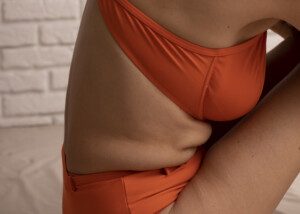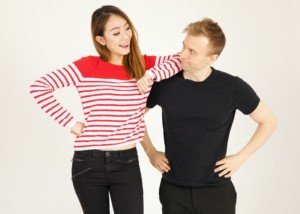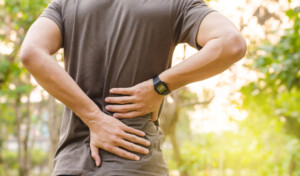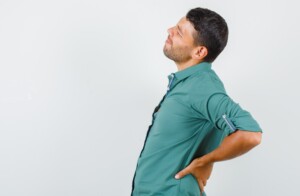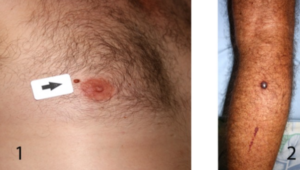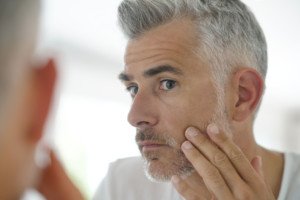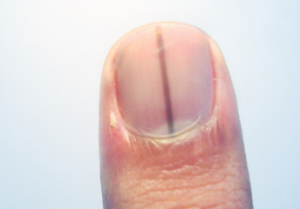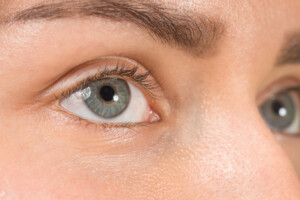
Why is there still so much shock that Instagram influencers manipulate their pictures to look thinner, smoother or in some other way flawless?
The camera was invented in 1816. It wasn’t until 1839 that the first publicly announced and commercially viable photographic process was developed.
It’s accurate to state that since the invention of the commercially available camera, people have been posing for it to appear their most flattering.
However, what was deemed as flattering in the 19th century isn’t what’s considered flattering in modern times.
But there were still standards back then, as far as how to look one’s best in a photo.
What’s bizarre is that as of 2025, it’s still being treated as a shock factor when influencers reveal how other influencers (namely on Instagram) manipulate their images to appear as close to a beauty standard as possible.
How can anyone NOT know that influencers do this? It’s been going on since…well…the invention of the camera!
How Posing Was Manipulated in Past Eras
In the 1850s, early portrait photography borrowed heavily from painted portraiture, emphasizing stillness and formality due to long exposure times.
Sitters were often posed with straight backs, neutral expressions and slightly averted gazes to reduce movement blur.
According to historian Naomi Rosenblum in A World History of Photography (1997), photographers used posing stands to keep subjects steady, resulting in the upright, dignified postures typical of Victorian studio portraits.
By the 1880s, as exposure times shortened, posing grew more natural.
Photographers encouraged softer expressions and relaxed shoulders (British Journal of Photography, 1889).
In the early 20th century, Hollywood glamour reshaped ideals of flattering poses: turned shoulders, elongated necks and angled lighting emphasized elegance and contour.
Cecil Beaton’s work for Vogue in the 1930s popularized asymmetry and the “S-curve” stance as more dynamic and slimming (Beaton, Vogue, 1934).
By the 1950s, pin-up and fashion photography emphasized confidence and curves.
Photographers encouraged movement — leaning forward, laughing or turning mid-motion — to convey life and spontaneity (Harper’s Bazaar, 1955).
In the 1970s and 1980s, the trend was for relaxed, naturalistic poses.
Today’s “Manipulation”
Today’s posing trends — including angled selfies, soft smiles and candid stances — reflect digital-era self-awareness and social media aesthetics.
We can go even further, regarding today’s trends, and point out the “fish lips” or pouty full lips, ridiculously smooth skin via filters, eyes made to look big and upturned (either via makeup or filters) and just a whole basketful of other tricks.
- The three-quarter standing stance (though this has been used for decades) to shrink the waistline
- Deliberate positioning of the low spine and legs to make the thighs appear thinner and the booty appear shapelier
- And the oldest trick in the book: sucking in the gut and standing tall.
Let’s face it: It’s not flattering when you’re sitting in a way that accentuates “rolls” in the tummy.
Wanting to conceal these, via deliberate posing, is no more non-authentic than is covering up moles or pimples on the face with concealer, or putting on false eyelashes or fake fingernails.
Positioning one’s body to slim the thighs is no more “not real” than is putting a hot metal rod to one’s hair to curl or straighten it, or pouting one’s mouth to make their lips appear fuller.
What I find really odd is when an influencer speaks out about how her fellow influencers conduct all these tricks of the trade.
Now certainly, it’s a whole new level when someone uses a digital filter for numerous changes that make them look like a different person, e.g., making more prominent cheekbones, a smaller chin, a lower hairline, a narrower nose and a wider mouth.
Striking a particular pose doesn’t change your body, but digital filters do.
Yet body positioning is perhaps the most criticized “trick” that influencers use.
Not even five pounds of makeup get as much criticism.
However, shouldn’t today’s up-and-coming generation already know that all these tricks are what influencers do to look gorgeous on Instagram?
How does this get by anyone? But apparently, it does. How do I know?
Because I’ve read Instagram posts by women claiming how triggering it is to see slimmer and/or more beautiful women on Instagram.
It shouldn’t be triggering. It shouldn’t wear on them. Instead, it’s time that women (and men) simply accept the fact that not everyone is going to have a face like Helen of Troy, or a body like (fill in the blank; there’s no one ideal body type).
I say there’s no one ideal physique because a lot of women think a body like “scary skinny” Angelina Jolie’s is perfect, while many others see a buff body like an Olympic sprinter’s as perfect.
I’ve always wanted to be taller – since first grade. I’ve always been taller than average, but not “tall tall.”
However, when I see taller women, I don’t let it eff up my mental health. Do I envy them? YES!
Do I allow myself to become despondent or their superior height to wear on me? NO, NO and NO.
And I never have, either. Why is this approach so difficult for so many of today’s influencers and their throngs of followers?
I’ve always wanted a natural tan. When I see women with natural tans due to their ethnicity, do I let it shake me up? NO. Do I study their skin tone with envy? YES.
Do I go to bed that night depressed and questioning my worth? NO, NO and NO.
Have I ever? Certainly not. Instead, I’ve always, since childhood, acknowledged that some people will have traits that I could never have – and that I have traits that maybe they’d love to have.
For example, that six-foot-tall woman might envy my thick voluminous head of hair, while she forever struggles to put lift in her thin limp hair.
Get Over It and Stop Comparing
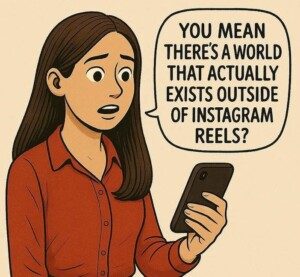
This younger generation needs to stop comparing themselves to Instagram images, even if they don’t see signs of manipulation.
Today’s fragile, easily influenced young adults need to get a grip and focus on the things in life that truly matter.
And they need to start using some critical thinking skills and assume that many influencers are posed in ways to look optimally flattering, complete with lighting, makeup and having shots taken on an empty stomach.
Nothing can wear on you without your permission!
- Stop using strangers as yardsticks for how to feel about yourself.
- If you feel “pressure” to look a way that you never will or would have to struggle to achieve, ask yourself where this pressure is coming from. Don’t be surprised if you can’t pinpoint a source. It’s coming from you.
- If you can’t help but compare your body to the women you’re in a photo with … ask yourself what’s fueling this compulsion. Hint: you!
- Are you living your life through the Instagram reel? If yes, then ask yourself how in God’s name girls survived before the advent of Instagram! They somehow managed!
I’m not saying it’s possible never to ever have anything negative to say about your body.
It’s actually human nature to, and I’ll bet that even cavepeoples would occasionally notice something about themselves and question it.
But it’s entirely your choice to let it F*CK up your head.
![]()

